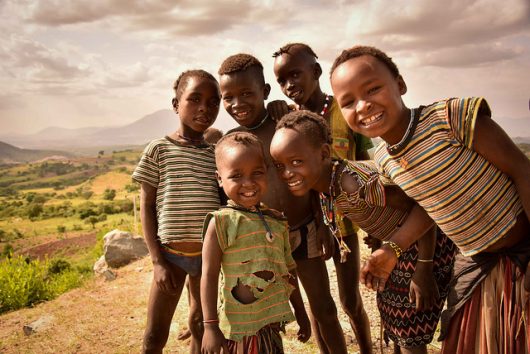How Many Africans Live in Poverty?

Understanding how many Africans live in poverty means delving into the economic and social status of every country on the continent. As Africa’s population continues to grow at record rates, making it the second-most populous region in the world, so does the need to reduce poverty and truly understand how many Africans live in poverty.
Despite assumptions that poverty in Africa is worsening or stagnant, according to the United Nations, current estimates of poverty in Africa are actually lower than expected. The number of Africans considered impoverished fell from 56% in 1990 to 43% in 2012. Even with improved statistics, the proportions must also count the rapidly increasing population which averages about 2.6% growth each year. With this growth in mind, the percentages translate to roughly 330 million poor in 2012 compared to 280 million in 1990.
Africa has also improved in other areas, helping to alleviate how many Africans live in poverty. Intergenerational mobility in education and occupation has bettered across the continent but remains low. South African publication Daily Maverick reports that access to electricity and sanitized water in the region has dramatically increased.
Even with the various societal improvements toward becoming more developed, Africa still suffers from widening inequality. The Brookings Institute has found divergent trends in simultaneously expanding economies and growing numbers of people living on less than $1.25 a day. Seven of the 10 most unequal countries in the world are in Africa and most of them in southern Africa. However, excluding these select countries, inequality is not higher in Africa than elsewhere in the world. Some Africans are becoming wealthier, and others are becoming poorer. Differences between urban and rural areas across regions are large. Reducing how many Africans live in poverty is not an isolated solution, but one that must keep in mind economic inequality.
Those vulnerable to widespread inequality suffer the consequences. Twenty-eight of the poorest countries are in Africa. Without stable governments to ensure basic rights, 589 million sub-Saharan Africans live without electricity, and almost 40% of people in the world without access to safe drinking water live in Africa. Diseases such as malaria and HIV/AIDS result in premature deaths and orphaned young people without the resources available to escape the depths of poverty. However, there is a disconnect between the realities of poverty and the policymakers able to assist further with inequality in Africa.
How do people learn more about accurately defining how many Africans live in poverty and inequality? Through more frequent and widespread household surveys, the information gap between censuses must be shortened; the latest for some countries is at least three years old according to the United Nations. As quickly as the African landscape changes, accurate information about poverty in Africa is the catalyst necessary for advocacy and progress.
Africa is a mural dyed with many shades not fully encompassed in a single statistic. A piece of data cannot amplify the voices of those impoverished. But for those capable of communicating the reality of how many Africans live in poverty, a statistic can translate into action.
– Allie Knofczynski
Photo: Flickr
